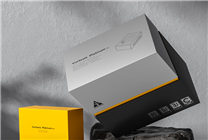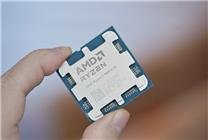Blue Origin Successfully Launches 15th Spaceflight with Mystery Passenger
Summary:
- Blue Origin completed its 15th space flight, sending six passengers, including an unidentified individual, into suborbital space.
- The New Shepard rocket achieved a smooth launch and landing, marking another milestone in reusable rocket technology.
- The mystery passenger was later revealed to be William H. Lewis, chairman of Insmed.
On October 8, Blue Origin, the aerospace company founded by Amazon’s Jeff Bezos, marked a significant milestone in commercial space travel by successfully conducting its 15th space flight. This mission, designated as NS-36, featured the launch of six passengers, including a mystery individual whose identity remained undisclosed until the flight’s conclusion.
Launch Details and Mission Overview
The New Shepard rocket ignited and launched at 9:40 a.m. Eastern Time (9:40 p.m. Beijing Time). The flight proceeded without a hitch, reaching a height of 66 miles (approximately 106.2 kilometers) above the Earth, slightly surpassing the Karman Line, which is often regarded as the boundary of space.
Approximately eight minutes after its launch, the rocket’s first stage successfully executed a vertical landing, demonstrating the efficiency of Blue Origin’s reusable rocket technology. Following this, the spacecraft’s cabin deployed its parachutes and safely landed in the Texas desert, concluding a brief yet exhilarating journey.
Remarkable Passenger Line-Up
The spacecraft was occupied by a diverse group of individuals, each bringing unique backgrounds to this space exploration endeavor. Among the passengers were:
- Jeff Elgin, a franchise industry expert
- Danna Karagussova, a media professional
- Clint Kelly III, an accomplished electrical engineer
- Aaron Newman, a software entrepreneur
- Vitalii Ostrovsky, a businessman and investor from Ukraine
The presence of an anonymous passenger added an air of intrigue to the mission. This mystery guest chose to keep their identity concealed until the end of the flight, creating suspense and curiosity.
Identity Revelation
Upon completion of the flight, the mystery passenger was revealed to be William H. Lewis, the chairman of Insmed, a biomedical company. His participation underscores the increasing interest from diverse sectors in commercial space travel, which offers not only adventure but also potential new avenues for research and innovation.
Innovation in Reusable Rocket Technology
Blue Origin’s New Shepard has been operational for nearly a decade, with today’s mission marking its 36th voyage—though only 15 of these flights have carried people. The majority of previous missions served scientific research purposes and were conducted without human passengers, showcasing the versatility of the spacecraft for various applications.
The reusable nature of the New Shepard rocket continues to position Blue Origin at the forefront of advancements in space travel technology. Its ability to recycle components reduces costs and increases the viability of regular space flights, paving the way for potential commercial opportunities in outer space.
Costs and Competitive Landscape
While officials did not disclose ticket prices for this flight, it is noteworthy that competitors in the commercial space travel sector, like Virgin Galactic, charge around $600,000 per person (approximately 4.28 million yuan at current exchange rates). The pricing dynamics in this burgeoning industry will remain a topic of keen interest as Blue Origin and others continue to innovate and expand their service offerings.
Conclusion
Today’s successful mission by Blue Origin exemplifies the rapid advancements in commercial space travel and the growing participation of individuals from various professional backgrounds. The combination of cutting-edge technology and the allure of space exploration continues to captivate the public imagination, signaling a bright future for the industry.
As companies like Blue Origin and Virgin Galactic push the boundaries of what is possible in space travel, the vision of making space accessible to more people becomes increasingly tangible. With each launched mission, the prospects of scientific research, adventure tourism, and technological innovation in outer space continue to expand, forging a new era in human exploration beyond Earth.





